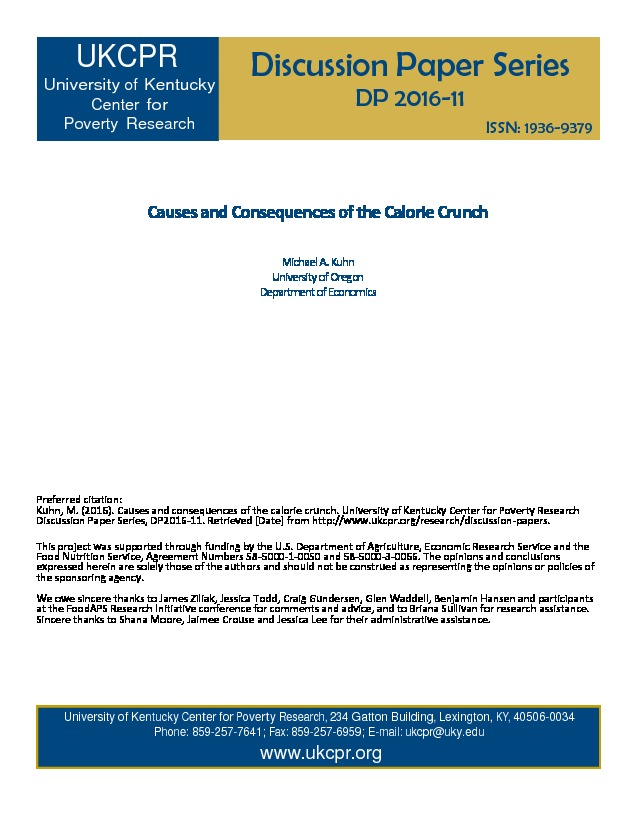Monthly welfare programs such as the Supplementary Nutrition Assistance Program (SNAP) produce consistent cycles of expenditure and consumption amongst recipients. Food insecurity and negative behavioral outcomes track these cycles. This paper leverages new data from the USDA, the FoodAPS survey, and to answer a variety of questions related to these phenomena: Are consumption and expenditure cycles correlated? Who bears the burden of food shortages at the end of each benefit month? Does diet quality track food expenditure? I find robust expenditure and consumption cycles in the FoodAPS data, but contrary to popular belief, they are only weakly correlated. The youngest children are spared from cyclical food shortages, but school-aged children experience them when they are out of school. Universal participation of the sample in school meal programs while in school (and the complete lack of participation in summer meal programs) suggests that these programs may mitigate a great deal of children’s food insecurity. Diet quality declines over the course of the month, compounding the impact of fewer meals on health. Food access issues cannot explain the identified cycles. We interpret these findings as evidence consistent with a consumption-driven calorie crunch in which the expenditure cycle is a response to the previous month’s consumption deprivation.
Research
FoodAPSPDF Thumbnail
